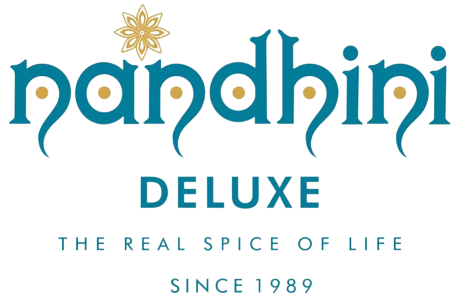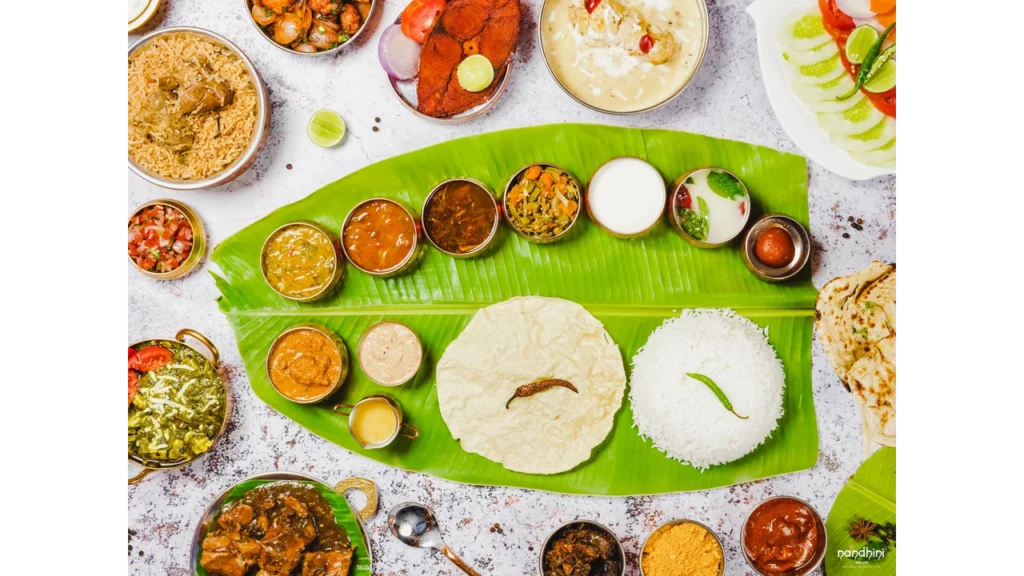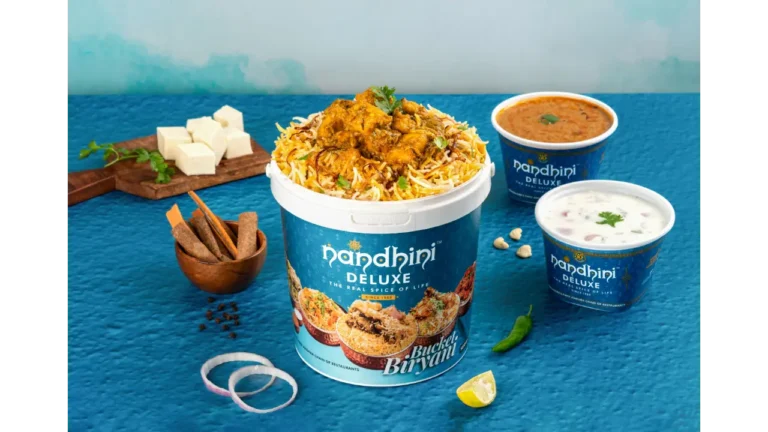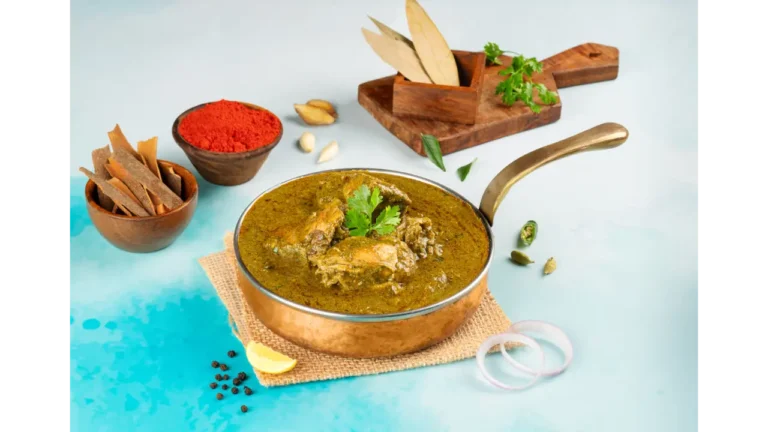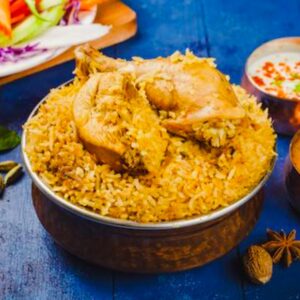Introduction
When you think of Andhra cuisine, the first thing that likely comes to mind is the intense spiciness. The kind that makes your eyes water, your nose run, and your taste buds completely light up. But have you ever stopped to wonder why it’s so spicy? Or how this culinary tradition came to be?
The history of Andhra cuisine is as rich and layered as the flavors in its iconic dishes. From royal kitchens and ancient spice routes to chili-laden street food and global restaurant menus, Andhra Pradesh’s food culture has been shaped by centuries of change, geography, climate, dynasties, and even colonizers played a role.
This article takes you on a flavorful journey through time. We’ll explore how Andhra food developed its fiery personality, why spice became its signature, and what makes it stand out even among other Indian cuisines.
Whether you’re a foodie, a curious traveler, or someone looking to cook an authentic Andhra meal, you’re about to learn how history, culture, and heat all come together on one plate.
Key Takeaways: Why Andhra Cuisine Is So Unique
- Chili wasn’t always part of Andhra cuisine—it arrived much later through the Portuguese.
- Early dishes used pepper, tamarind, and local herbs for flavor.
- Each ruling dynasty brought new ingredients, cooking styles, and recipes.
- Andhra Pradesh’s hot and humid climate encouraged spice-heavy preservation techniques.
- Guntur’s world-famous chilies play a key role in the region’s global spice fame.
- Different regions like Rayalaseema and Coastal Andhra have their own flavor profiles.
- Spiciness is tied to both cultural identity and practical reasons like digestion and preservation.
- Today, Andhra cuisine is gaining global popularity through diaspora chefs and modern fusion dishes.
Table of Contents
Ancient Roots & the Pre-Chili Era
Believe it or not, there was a time when Andhra cuisine didn’t use red chili at all. Hard to imagine, right?
Before chili peppers arrived from the Americas via Portuguese traders in the 16th century, Andhra cooks relied on native spices like black pepper, long pepper (pippali), ginger, mustard seeds, and tamarind. These ingredients were the foundation of flavor in early dishes, providing heat, depth, and sourness without the red-hot kick we associate with Andhra food today.
Rice was (and still is) the staple grain, paired with a range of lentils and seasonal vegetables. Cooking methods like sun-drying, fermenting, and pickling helped preserve food in the region’s hot climate, long before refrigeration was even a concept. You’ll find hints of these techniques still used today in dishes like pulusu (tamarind stew), pachadi (spicy chutney), and traditional pickles.
In short, even before chili came into the picture, Andhra food already had a strong personality and a clever way of working with nature.
Dynastic Influences Timeline
As Andhra Pradesh evolved, so did its food, shaped by the rise and fall of powerful dynasties over the centuries.
Each ruling empire left its culinary fingerprint, whether by introducing new ingredients, cooking methods, or dining customs. Here’s a snapshot of how history cooked up the cuisine we know and love:
| Dynasty | Period | Food Influence |
| Satavahanas | 1st BCE – 3rd CE | Promoted rice farming, tamarind sauces, and early vegetarian dishes. |
| Chalukyas & Cholas | 6th – 13th CE | Focused on temple-style cooking using ghee, lentils, and sesame oil. |
| Kakatiyas | 12th – 14th CE | Made gongura (sorrel leaves) and pickling popular household techniques. |
| Vijayanagara Empire | 14th – 17th CE | Introduced aesthetic food presentation and millet-based preparations. |
| Qutb Shahi Dynasty | 16th – 17th CE | Added Mughlai flavors, meat curries, and biryani-style layering. |
As you can see, Andhra cuisine is not just spicy, it’s historically rich. Every dynasty added a layer of flavor, turning it into a tapestry of tastes that reflect the diversity of its rulers and regions.
Geography Meets Heat
If you really want to understand why Andhra cuisine is so spicy, just take a look at the map.
Andhra Pradesh stretches from lush river deltas to dry interior plains. This geographical diversity directly shapes its food. The regional variation in terrain and climate plays a huge role in the spice level and ingredient choice.
Here’s how it breaks down:
- Coastal Andhra (Krishna & Godavari deltas): Fertile land, plenty of water, and access to seafood. The food here is rich in tamarind, coconut, and fish-based curries with a moderate spice level.
- Rayalaseema: Dry, arid, and hot. This is where spice hits hard. Locals here developed a taste for ultra-spicy dishes like ulavacharu, natukodi kura, and fiery pickles, possibly as a way to increase appetite and stay cool through perspiration.
- Uttarandhra (North Coastal): A slightly milder region, where food tends to be more balanced in flavor, spicy, but with noticeable sweet and sour notes.
The natural climate also pushed locals to find smart preservation techniques. Enter: chili. It not only amped up flavor but also acted as a natural preservative—perfect for long-term storage of pickles and spice mixes in a region where summer temperatures easily cross 40°C (104°F).
So yes, geography fired up the Andhra plate.
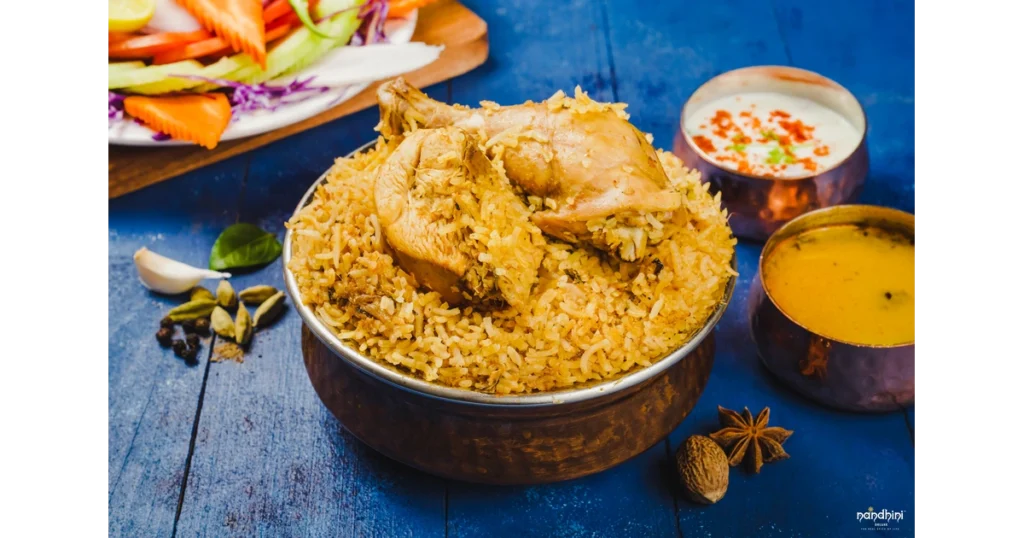
The Chili Revolution
Here’s the real plot twist in the story: chili isn’t native to India at all.
Red chili peppers were brought to the Indian subcontinent by Portuguese traders in the 16th century. But while the rest of the country took its time warming up to this spicy newcomer, Andhra Pradesh embraced it with open arms—and scorched tongues.
Why did it catch on so fast here?
- Climate compatibility: Red chilies thrive in the warm, semi-arid climate of Andhra, especially in districts like Guntur and Prakasam.
- Economic sense: Chilies were easier and cheaper to grow than pepper, making them more accessible to the masses.
- Preservation power: Sun-dried red chili powder became a staple for making long-lasting pickles, chutneys, and spice blends.
Today, Guntur is internationally known for its spicy, pungent Guntur Sannam chilies—a key ingredient in countless Andhra recipes. These chilies aren’t just about heat—they’re packed with flavor, depth, and just enough bitterness to create balance.
So, the arrival of chili didn’t just change Andhra cuisine—it defined it.
Why Is It So Spicy?
Okay, now let’s get to the burning question—literally.
Why is Andhra food so famously, unapologetically spicy?
It’s not just about thrill-seeking or showing off. The use of intense spice in Andhra cuisine is a perfect blend of tradition, science, survival, and cultural pride.
Here’s what fuels the fire:
- Preservation in a hot climate: Before refrigerators, people relied on chili to preserve food. It has antimicrobial properties that help prevent spoilage, especially in pickles and spice blends.
- Affordable and accessible: Compared to black pepper (which was once expensive and mostly for the wealthy), red chili was cheap and easy to grow locally.
- Digestive benefits: According to Ayurveda, spicy food boosts agni, or digestive fire. It helps stimulate metabolism and fights bacteria in food, particularly useful in the heat and humidity of Andhra summers.
- Cultural conditioning: From a young age, people in Andhra are introduced to spicy food. It becomes part of their identity. Over generations, the spice tolerance goes up, and so does the preference for that heat.
- Flavor layering: It’s not just about burning heat. Andhra dishes use spices intelligently to balance sour tamarind, earthy lentils, and sweet jaggery. The heat often brings harmony to the dish.
So, the spice in Andhra food isn’t just for shock value. It’s deeply rooted in the environment, culture, and wellness.
Regional Flavors & Variances
One of the best things about Andhra cuisine is how it changes as you move across the state.
While the spice is a unifying theme, each region adds its twist to the heat.
Let’s break it down:
| Region | Spice Level | Flavor Profile | Signature Dishes |
| Coastal Andhra | Medium to High | Tangy and earthy | Chepala Pulusu (fish curry), Gongura Royyalu (sorrel shrimp), Pappu Charu |
| Rayalaseema | Extremely High | Bold and smoky | Ulavacharu (horse gram stew), Ragi Sangati with Natukodi Kura |
| Telangana (formerly part of AP) | Medium to High | Spicy with a Mughlai touch | Mirchi Ka Salan, Hyderabadi Biryani, Bagara Baingan |
| Uttarandhra | Medium | Balanced with sweet notes | Bellam Avakaya (jaggery mango pickle), Bobbatlu, Aratikaya Vepudu |
Even the chilies vary. Guntur offers fiery heat, while milder varieties are favored up north. And although Andhra is known for spice, there’s just as much appreciation for balance and depth in its cooking.
So yes, it’s spicy. But it’s also smart, regional, and rich in variety.
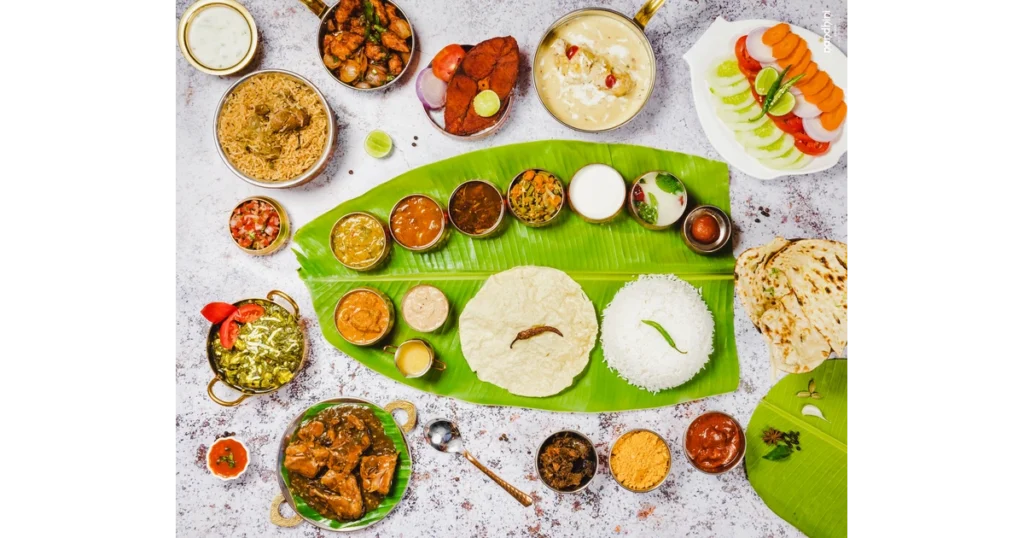
Signature Dishes & Spice Profiles
If you want to understand the essence of Andhra cuisine, you have to taste it.
Andhra food isn’t just hot for the sake of being hot—it’s packed with layers of flavor, carefully built through spice mixes, time-tested techniques, and local produce. Let’s explore a few iconic dishes that show how spice works with the rest of the ingredients, not against them.
Must-Try Andhra Dishes (And What Makes Them Special)
- Gongura Pachadi – A fiery chutney made with sorrel leaves (gongura), garlic, and chilies. The tangy bitterness of the leaves blends beautifully with the spice.
- Kodi Vepudu – A dry-fried chicken dish where the meat is marinated in chili paste, ginger-garlic, and local masalas, then slow-fried until crispy.
- Royyala Pulusu – A sour and spicy prawn curry made with tamarind juice and red chili powder. A favorite in Coastal Andhra.
- Avakaya – The king of Andhra pickles. It’s a raw mango pickle made with mustard seeds and a generous dose of red chili powder—no Andhra meal is complete without it.
- Pootharekulu – A paper-thin sweet made with rice starch, sugar, and ghee. While it’s not spicy, it shows the contrast and balance in Andhra meals.
- Tirupati Laddu – Offered at the famous Tirumala temple, this GI-tagged sweet is made in massive quantities and reflects the spiritual side of Andhra food culture.
Each of these dishes tells a story. They’re not just recipes, they’re reflections of the land, the weather, the people, and their love for food that makes an impression.
Modern Revival & Diaspora Influence
Andhra cuisine is no longer confined to its home turf. Over the past two decades, it has seen a major revival and global expansion, thanks to food entrepreneurs, chefs, and a growing love for regional Indian flavors.
Here’s how Andhra food is making waves today:
- Urban restaurant boom: Cities like Hyderabad, Bengaluru, Chennai, and even Mumbai are home to specialty Andhra restaurants serving authentic thalis, gongura biryanis, and more.
- YouTube and food bloggers: Andhra home cooks are turning into digital stars. Their step-by-step videos on pickling, pulusu, and pachadi have gone viral.
- Andhra abroad: In places like the U.S., Canada, and the UK, Andhra food trucks and restaurants are introducing locals to the cuisine, with slightly toned-down spice levels for the uninitiated.
- Fusion cuisine: Chefs are experimenting with Andhra flavors in creative ways—think Gongura tacos, Avakaya pasta, or Kodi Vepudu bao buns. These modern twists are opening up Andhra cuisine to new audiences.
Even global spice markets now carry Guntur chili powder, and ready-to-use Andhra-style curry pastes are showing up on shelves worldwide. The revival is real—and it’s just getting started.
Protecting Heritage: GI Tags
As Andhra cuisine gains recognition on the global stage, there’s also a growing movement to protect its authenticity and heritage. One important way that’s happening is through Geographical Indication (GI) tags.
A GI tag helps officially recognize and protect products that are unique to a specific region. Think of it as a culinary passport stamp—proof that a certain food item comes from a particular place and carries the cultural value and history of that region.
Here are a few Andhra treasures that have received this honor:
- Guntur Sannam Chili – Known for its bright red color and intense heat, this chili is globally famous and widely exported. The GI tag helps preserve the local farming economy.
- Tirupati Laddu – Offered at the Tirumala temple, this massive prasad sweet has a special place in both religious and culinary history.
- Pootharekulu – These delicate, paper-thin sweets from Atreyapuram are handmade by village artisans and are slowly getting the recognition they deserve.
Why does this matter? Because GI tagging isn’t just about bragging rights—it’s about economic empowerment for rural communities, and protecting traditional methods that have been passed down for generations.
So when you bite into a piece of Avakaya or spoon up some Gongura Pachadi, you’re tasting more than food—you’re tasting a protected legacy.
Experience Authentic Spice at the Best Andhra Restaurant in Bangalore – Nandhini
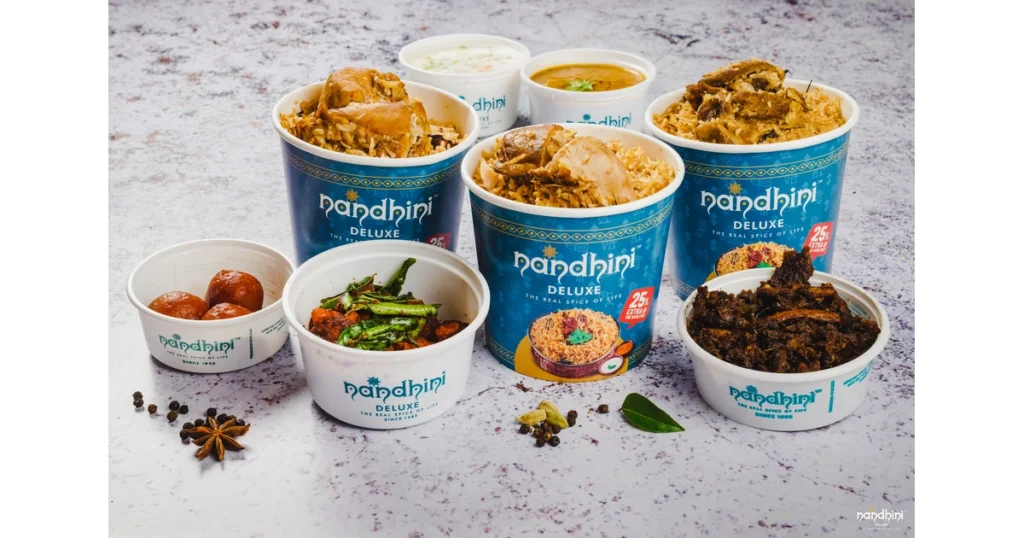
After reading about the fiery history and regional depth of Andhra cuisine, there’s only one question left: Where can you taste it all in its truest form? If you’re in Bangalore, the answer is simple: Nandhini Restaurant.
At Nandhini, we don’t just serve food—we serve stories. Stories of ancient dynasties, spice-laden markets, and time-honored family recipes passed down across generations. As the best Andhra restaurant in Bangalore, our mission is to bring the soul of Andhra Pradesh to your plate, one spicy bite at a time.
Why Food Lovers Choose Nandhini:
- Authenticity First: From our slow-cooked Natukodi Pulusu to our legendary Gongura Mutton, every dish stays true to its regional roots.
- Home to the Guntur Heat: We use original Guntur Sannam chilies for that unmistakable Andhra kick—balanced, bold, and unforgettable.
- A Taste of Every Region: Whether you crave the tang of Coastal Andhra or the fire of Rayalaseema, our curated menu travels across the state in flavor.
- Vegetarian & Non-Vegetarian Andhra Thalis: Served daily, our thalis are the perfect introduction to Andhra’s spice-rich variety.
- Family Recipes & GI-tagged Ingredients: Our signature dishes honor local ingredients like Gongura, Avakaya, and Guntur chili, sourced responsibly and prepared traditionally.
Thousands of locals, foodies, and expats have made Nandhini their go-to destination for authentic Andhra cuisine in Bangalore. From weekday lunches to weekend family feasts, we bring the heat, the heritage, and the hospitality that make Andhra food so legendary.
Ready to take your taste buds on a journey? Visit us at nandhini.com and discover why we’re celebrated as the best Andhra restaurant in Bangalore.
Frequently Asked Questions (FAQ)
1. Why is Andhra food considered the spiciest in India?
Andhra food uses generous amounts of red chili powder—especially from Guntur—because it’s locally grown, affordable, and culturally accepted. The region’s hot climate also encouraged the use of spices for preserving food, and over generations, high spice tolerance became part of the food identity.
2. Was Andhra food always this spicy?
No, it wasn’t. Before red chili was introduced by the Portuguese in the 16th century, Andhra cuisine relied more on black pepper, long pepper, and tamarind for flavor. The arrival of chili revolutionized the local food scene.
3. What are the main ingredients used in Andhra cuisine?
Key ingredients include red chili powder, tamarind, mustard seeds, curry leaves, garlic, gongura (sorrel leaves), lentils, rice, and various pickles. These form the foundation of both vegetarian and non-vegetarian dishes.
4. What makes Guntur chili special?
Guntur chili is known for its vibrant red color, pungent heat, and unique flavor profile. It’s widely used in Andhra cooking and is also a major export product. It even has a GI tag to protect its authenticity.
5. Are there different styles within Andhra cuisine?
Yes, Andhra cuisine varies by region:
Coastal Andhra features tangy and moderately spicy seafood dishes.
Rayalaseema is known for extremely spicy, rustic flavors.
Uttarandhra cuisine is more balanced with occasional sweet notes.
6. Is Andhra food always too spicy for beginners?
Not necessarily. While spice is a signature trait, it’s also layered and balanced. Many restaurants offer milder versions, and dishes like pappu, pulihora, or gongura dal are flavorful without being overpowering.
7. What are some iconic Andhra dishes I should try?
Start with Gongura Pachadi, Kodi Vepudu, Chepala Pulusu, Royyala Iguru, and Avakaya. For sweets, try Pootharekulu or Tirupati Laddu.
Conclusion
Andhra cuisine isn’t just spicy food on a plate—it’s history you can taste.
From ancient peppered stews to chili-powered pickles, from royal kitchen innovations to family recipes passed down for centuries, every bite tells a story. Geography gave it character, dynasties added depth, and red chili brought the fire that turned it into a legend.
But it’s not all about the heat. It’s about balance, heritage, and cultural identity. Whether you’re savoring fiery Kodi Vepudu in Rayalaseema or a sweet Pootharekulu in Uttarandhra, you’re experiencing a cuisine shaped by time, terrain, and tradition.
And now, thanks to GI tags, modern restaurants, and a passionate global diaspora, Andhra cuisine isn’t just surviving—it’s thriving.
If you’ve made it this far, you’re not just a reader—you’re officially part of the Andhra food story. Hungry yet?
